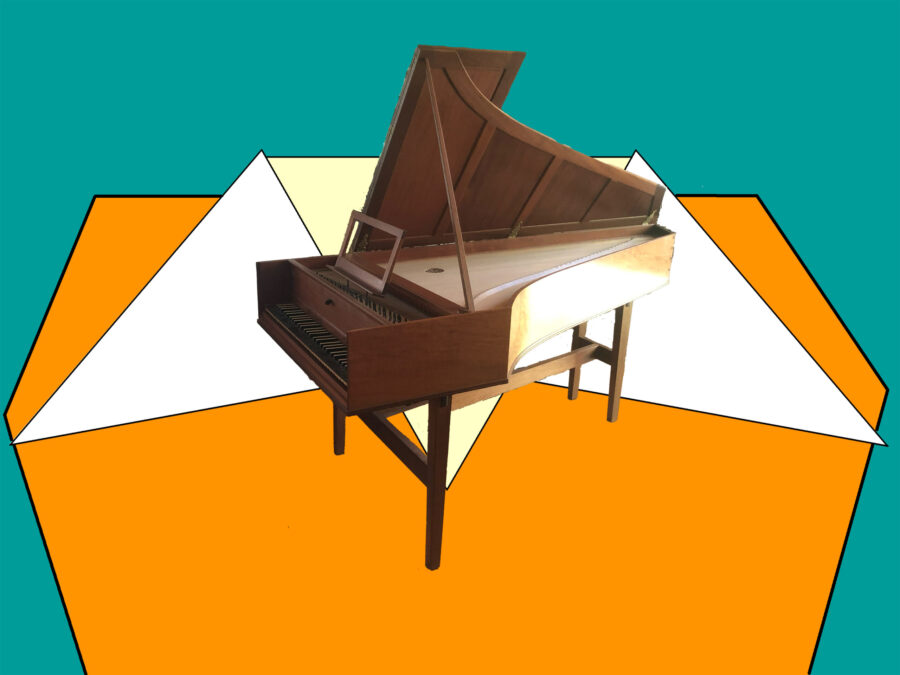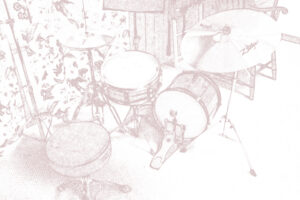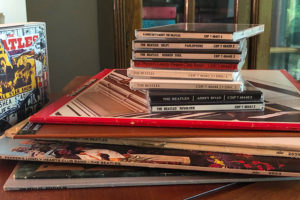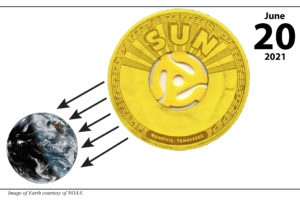This blog is the third in a series that explores the use of harpsichord in popular music. (Part 1 here. Part 2 here.) The harpsichord continued to be used after the 1960s to provide a background filler or a distinctive timbre for solos.
Songs from the 1970s that Use Harpsichord
Al Stewart
“Time Passages” (1978)
https://www.youtube.com/watch?v=QQD-OvbCfCU
Ambrosia
“Cowboy Star” (1976) is on their second album, Somewhere I’ve Never Travelled. It is a fantasy piece and includes a dazzling, orchestrated interlude inspired by classical composer Aaron Copland. It was written and arranged by David Pack.
Apollo 100
“Joy” (1972) is an instrumental track based on Bach’s “Jesu, Joy of Man’s Desiring.” Apollo 100 was a short-lived group of studio musicians who were brought together by multi-instrumentalist and arranger Tom Parker.
Barry White
“Bring Back My Yesterday” (1973) is from his debut studio album, I’ve Got So Much to Give.
“Never, Never Gonna Give Ya Up” (1973) is from the second studio album, Stone Gon’. The harpsichord provides a choppy, syncopated rhythm typical of a guitar accompaniment.
“Standing In the Shadows of Love” (1973) is on his debut studio album, I’ve Got So Much to Give. The original version has a long intro section using strings, pizzicato strings, piano, and harpsichord.
“Under the Influence of Love” (1973) was a Barry White production recorded by Love Unlimited. Love Unlimited was a female vocal trio who provided backing vocals for Barry White. They also had success with their own recordings.
“Honey Please, Can’t Ya See” (1973)
https://www.youtube.com/watch?v=ftG9-U2sSwA
“I Can’t Believe You Love Me” (1974)
“I’m Gonna Love You Just a Little More Baby” (1973)
“I Love You More Than Anything (In This World Girl)” (1974)
Blood, Sweat & Tears
“The Battle” (1970) is on their third album, Blood, Sweat & Tears 3. The song is written by Dick Halligan and Steve Katz. Dick Halligan, one of the founding members of the group, is playing harpsichord. He has a master’s degree in music theory and composition from the Manhattan School of Music.
https://www.youtube.com/watch?v=eqUqz9Vobis
Bread
“Everything I Own” (1972) Larry Knechtel is playing harpsichord.
Carpenters
On their album, Ticket to Ride, Richard Carpenter is listed as playing harpsichord. The album was first released in 1969 with the title, Offering. It was reissued in 2007.
“Eve” (1969) is from their album, Ticket to Ride, which was later reissued as Offering, in 2007.
There is a clash between the cello and harpsichord that Richard had hoped to fix later in the remixing. However, with limitations of 8-track recording, the cello was combined onto the same track with the harpsichord making it impossible to separate.
On their third album released in 1971, Carpenters, Richard Carpenter is listed as playing harpsichord.
“Druscilla Penny” (1971) is from their album, Carpenters.
Crosby, Still, Nash & Young
“Deja Vu” (1970) David Crosby wrote the song. John Sebastian of the Lovin’ Spoonful is playing harmonica on the track.
“Our House” (1970) The piano is more prominent than the harpsichord, but you can hear the harpsichord’s distinctive sound in the background. Graham Nash is playing the harpsichord.
Fleetwood Mac
“Gold Dust Woman” 1977 is from the album, Rumours. Mick Fleetwood is playing an electric harpsichord with a jet phaser. The keys of the harpsichord were marked with tape so Mick could play the right notes.
Jim Croce
“Time in a Bottle” (1970) was written in December 1970 after his wife told him she was pregnant. The song was on his debut album, You Don’t Mess Around with Jim. The arrangement features a harpsichord that producer Tommy West found had been left in the mixing studio.
“The night before we were going to mix, I was watching a horror movie on TV, and something must have lodged in my brain because when I walked into the studio the next day, I saw this harpsichord sitting in a corner and got an idea. A jingle company had used it on a session and in walked a couple of guys from SIR [Studio Instruments Rental] to haul it away. I asked them to take a lunch break and told Bruce to put a couple of mics on it. He was whining that it was out of tune, but I asked him to let me try something. I added two tracks of harpsichord, told the movers they could remove it, walked into Jerry’s office and asked if I could borrow the electric bass that was sitting on his couch, played that on just the second verse and the outro, and that was that! Radio compression worked in our favor on that record. It made the harpsichord blend with the two guitars in an unusual way. But we thought this record would only be an album cut.”
— Gary Eskow. “Classic Tracks: Jim Croce’s ‘Time in a Bottle” Mix magazine, April 26, 2015
Jimmy Buffett
“Come Monday” (1974)
https://www.youtube.com/watch?v=Qwx-MlbAyJ0
John Miles
“You Make It So Hard” (1971) John Miles is a British rock vocalist, songwriter, guitarist, and keyboard player.
Linda Ronstadt
“Long, Long Time” (1970) was written by Gary White. It is on her album, Silk Purse which was recorded in Nashville. Capitol Records tried to dissuade her from picking more songs like this because they considered it too country. However, it reached number 25 on the Billboard Hot 100 singles chart, and it earned her a Grammy nomination in 1971. Norbert Putnam was the arranger and conductor. He grew up near Florence, Alabama and was part of the Muscle Shoals musicians brought to Nashville to play with Elvis Presley in 1965.
Mannheim Steamroller
Fresh Aire II (1977) is the second album by new-age group Mannheim Steamroller. Jackson Berkey plays harpsichord. Berkey was an accomplished pianist having received a master’s degree in piano performance from Juilliard School of Music.
Maureen McGovern
“The Morning After” (1972) was written by Joel Hirschhorn and Al Kasha for the movie, The Poseidon Adventure. In the movie it was sung by a vocal double, Renee Armand. After the film’s release it was recorded by Maureen McGovern and won the 1972 Academy Award for Best Original Song.
Meatloaf
“Two Out of Three” (1977) is from the album, Bat Out of Hell which is one of the best-selling albums of all time.
Michael Jackson
“Got to Be There” (1972)
“I Wanna Be Where You Are” (1972)
Nick Drake
“Fly” (1971) is on his second album, Bryter Layter. He was an English singer-songwriter known mostly for his acoustic guitar-based songs. He suffered from depression and died in 1974 at age 26. The song features John Cale of Velvet Underground on harpsichord.
https://www.youtube.com/watch?v=B2HHpQWmJJQ
Ozark Mountain Daredevils, The
“Mr. Powell” (1975) by Larry Lee is on the third album, The Car Over The Lake. The intro features a harpsichord and mandolin.
This ballad commemorates the first men to go down the Colorado River, from Wyoming to southern Nevada, all uncharted, in 1869. The leader, Major John Wesley Powell, lost an arm in the Civil War. Three men gave up and went overland; all the rest made it through. Powell’s Journals are still in print and Wallace Stegner wrote the book Beyond the Hundredth Meridian about their trip. Powell is considered the father of the US Geographical Survey, as well as a pioneering anthropologist, geologist and ethnographer. It was an amazing accomplishment – and this song celebrates it perfectly.
Pacific Drift
“Tomorrow Morning Brings” (1970)
Partridge Family
“I Think I Love You” (1970) It was written by Tony Romeo. The song was their biggest hit, selling over five million copies, outselling the Beatles’ “Let It Be.” David Cassidy and Shirley Jones were the only cast members of the TV show who were featured on the recordings. The song has a brilliant harpsichord solo in the middle of the song. Larry Knechtel plays the harpsichord.
Queen
“The Fairy Feller’s Master-Stroke” (1974) Freddie Mercury plays harpsichord on this song as well as piano.
Roger Voudouris
“Get Used to It” (1979)
Rick Wakeman
“Catherine Howard” (1973) is from his second studio album, The Six Wives of Henry VIII. It is an instrumental progressive rock album. Wakeman is playing a Thomas Goff harpsichord and also uses two Minimoog synthesizers and two 400-D Mellotrons. It is also noteworthy that he used the portative organ at St. Giles-without-Cripplegate which is an Anglican church in London. The term “without” means it is outside the city wall, near the Cripplegate. The church is dedicated to St. Giles, patron saint of lepers, beggars, and the handicapped. It is one of the few medieval churches left in the City of London.
Stylistics, The
“Na Na is the Saddest Word” (1975)
Tom Waits
“I Hope That I Don’t Fall in Love With You” (1973) is from his debut album, Closing Time. The album is folk influenced, but Waits intended it to be a “jazz, piano-led album.” He began his career in 1970, performing every Monday night at The Troubadour in West Hollywood, California. He began working on the songs on the album at that time. This song is a lovely, heartfelt, poignant song. Tom Waits is playing harpsichord.
https://www.youtube.com/watch?v=UhZyLn0oVCs
Uriah Heep
“In the Park” (1971) was written by Ken Hensley who also played harpsichord on this track. Ken Hensely uses diverse instruments such as a vibraphone, organ, and harpsichord. The bridge of the song breaks into a jazz interlude with quick arpeggiated licks, along with short cymbal and hi-hat work . . . all punctuated with abrupt pauses.
Wings (Paul McCartney and Wings)
“One More Kiss” (1973) is from their second studio album, Red Rose Speedway. Linda McCartney is playing electric harpsichord.
Yes
“Madrigal” (1978) by the English progressive band “Yes” is on their album, Tomato. It was their ninth studio album. “Madrigal” features band member Rick Wakeman playing a Thomas Goff harpsichord. Wakeman also incorporated a Polymoog and a polyphonic analog synthesizer on the recording.
https://www.youtube.com/watch?v=HOS86MCi29c
Information about Thomas Goff harpsichord builder.
Use of Harpsichord in the 1980s and Beyond
In my next blog, “Use of Harpsichord in Popular Music: Part 4,” I will list music from the 1980s and later that uses harpsichord.
Do you know other songs from the 1970s that use harpsichord? List them in the comments below!










2 Comments
Leave your reply.